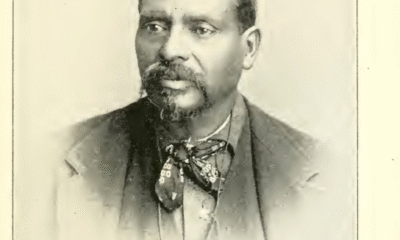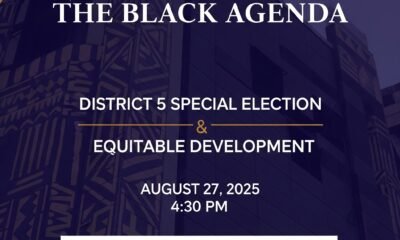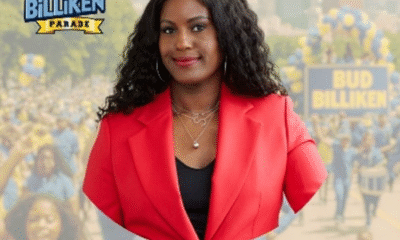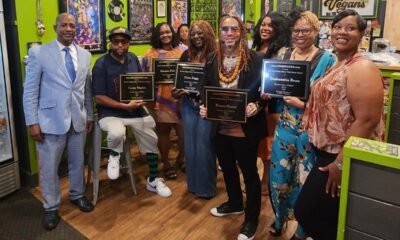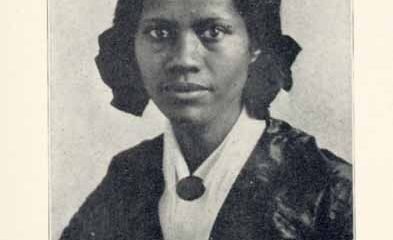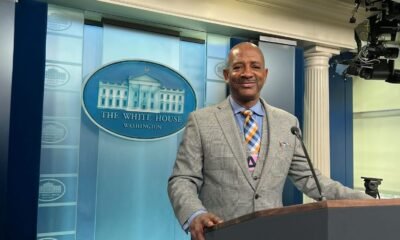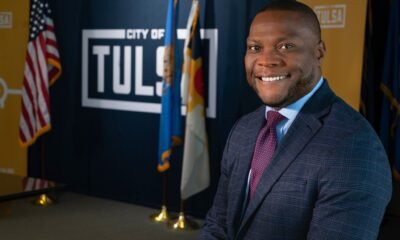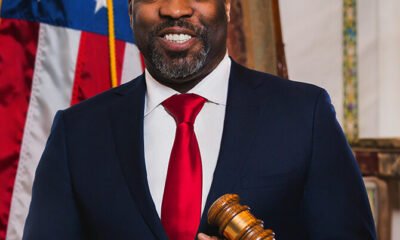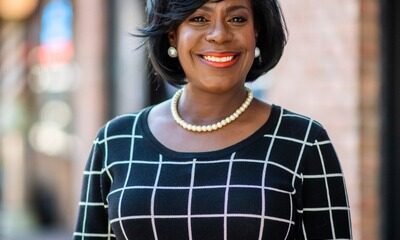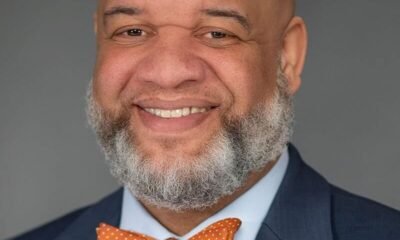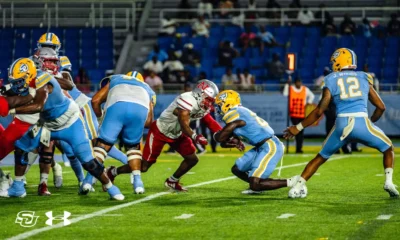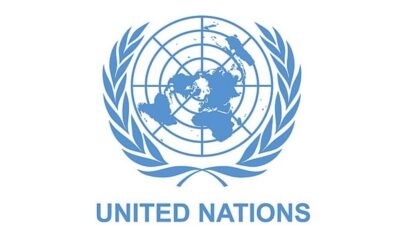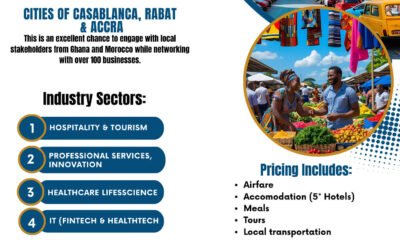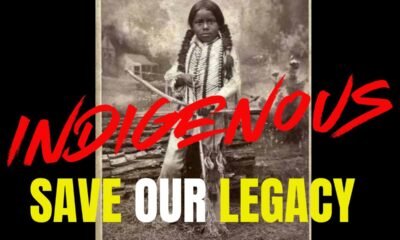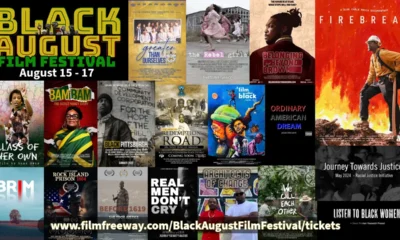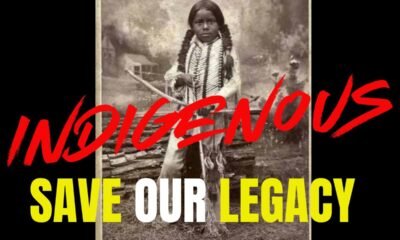Editorial/OP-ED
Opinion | ‘Something Is Wrong Here.’ More Than 100 Local Residents Had Brain Tumors, but What Was the Cause?
Published
3 years agoon
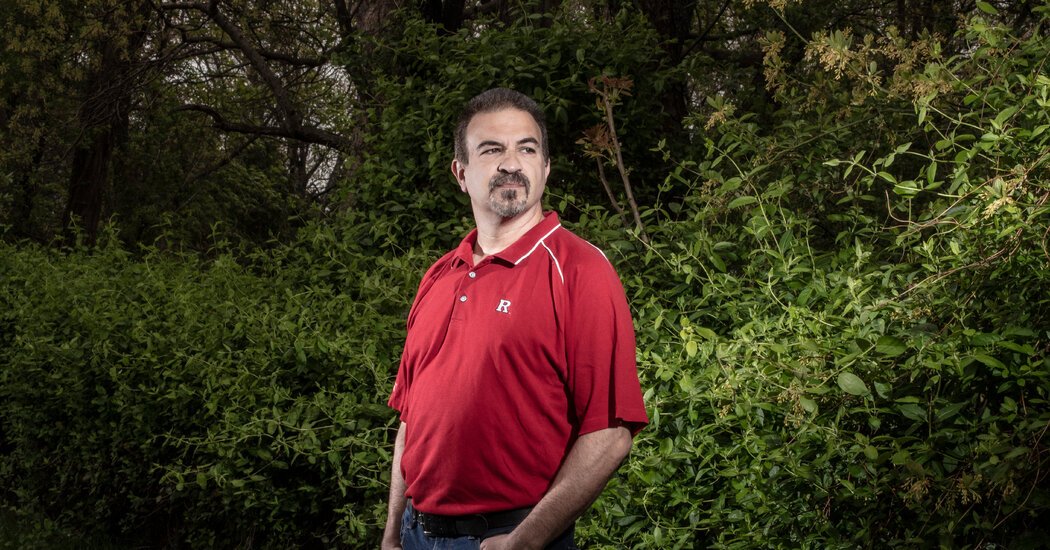
Al Lupiano, his wife and his sister all had brain tumors.
It started in 1999 when Mr. Lupiano, then 27, was diagnosed with a noncancerous one. Twenty-two years later, in 2021, doctors discovered that his wife, Michele, had a tumor, a benign acoustic neuroma on the left side of her brain. On the same day, his sister, Angela, learned she had a fast-growing malignant tumor, also on the left side of her brain.
All three had attended Colonia High School in Woodbridge, in central New Jersey, and soon enough, Mr. Lupiano began asking on Facebook and on a local news site if any other graduates had similar diagnoses. After Angela died in February, at the age of 44, Mr. Lupiano says, he started his outreach in earnest, fueled by a promise to his sister to seek an explanation. “Something is wrong here,” he said.
On April 10, Mr. Lupiano’s list of former students and staff members with primary brain tumors hit 100 names.
Jason Wisinski, who lost his wife and sister-in-law, both Colonia High alumnae, to primary malignant brain tumors at the age of 38, became one of many convinced that a cluster — a hyperlocal blight of cancer — could explain why so many young residents were succumbing to tumors. “There’s something there, in Colonia,” Mr. Wisinski said. “I’m 99.99 percent convinced.”
But in the field of public health, cancer clusters are defined by statistics, not gut instincts. According to the Centers for Disease Control and Prevention, a true cancer cluster must be a greater-than-expected number of cancer cases — of the same type of cancer or those proven to have the same cause, within a specific population over a set time. This is a high bar to clear.
Of the estimated 1,000 suspected cancer clusters reported to health departments each year, only a small fraction prove to be statistically significant cancer surges. And experts have been able to identify a clear cause in only a tiny percentage of those. (In one scientific review of 428 cancer cluster investigations over 21 years, for example, just one in eight cases was a confirmed increase in cancer, and only one investigation revealed a definitive source.)
Despite these odds, cancer cluster designations are considered crucial for both health officials interested in protecting public safety, and communities who fear they’ve been exposed to cancer-causing agents. The designation is the first, prerequisite step on the path toward a full-throated response, from investigation to cleanup and remediation and, potentially, legal recourse.
In 2016, Congress passed Trevor’s Law, named after a survivor of childhood brain cancer linked to a suspected cluster in Idaho deemed too small to study. “What happened in my community continually repeats itself throughout this entire country, year in and year out,” that survivor, Trevor Schaefer, told lawmakers in 2011. “Parents are trying to get authorities to investigate these clusters and to discern what caused the disease patterns. Scientists and health activists say the government’s current response to disease clusters ranges from piecemeal to nonexistent.”
Among other things, the law calls for periodic updates to federal cluster investigation guidelines — work that the C.D.C., compelled by the legislation, began in 2018. In its first update to the guidelines since 2013 (which are expected to be finalized this year) the agency acknowledges that barriers to discovering and declaring true clusters remain. However, the agency accepts a greater responsibility for helping communities cope with this uncertainty and the lack of resolution that often characterizes these investigations. “We recognized that communication guidance was an area that warranted attention,” said Patrick Breysse, director of the C.D.C.’s National Center for Environmental Health and the Agency for Toxic Substances and Disease Registry, in an email statement.
The updates also move to de-emphasize statistical significance as the main criterion for investigating suspected cancer clusters in order to make more room for other criteria, such as mortality and electronic health record data, neighborhood patterns of cancer and even community-created lists of individuals with cancer diagnoses.
What happened in Woodbridge illustrates the need for these changes, especially those aimed at bolstering the relationship between a concerned community and the public health experts facing the difficult task of investigating a suspected cluster.
Even before Mr. Lupiano’s list had reached 100 people, it had drawn the attention of local and national news media and had catalyzed public officials to act. “There could be a real problem here, and our residents deserve to know if there are any dangers,” Woodbridge’s mayor, John McCormac, said in April.
The Woodbridge town council spent $221,000 to deploy 83 radon testing devices and conduct radiological testing at the school building and encircling 28-acre campus. Officials also reviewed local data on naturally occurring radioactive deposits and followed up on reports of a radioactive rock discovered in a science classroom in 1997.
The state’s environmental agency confirmed that the water company — which does not use water from ground wells known to be pollution-prone — serving the area had not had any violations for radiological contaminants since at least 2004. The state’s health department calculated it would be statistically ordinary for about 120 former students and staff members to have developed brain tumors in the decades since the school was built in 1967.
On May 26, Mayor McCormac and state environmental and public health officials held a news conference in the high school’s gymnasium to share their final determination: There was no indication of any potential radiological hazards that would warrant further inquiry. By the time students let out for the summer, the case was closed.
“There never was a cancer cluster,” Mr. McCormac said in June. “We have to accept the results.”
But many in the community do not accept them. The investigation wasn’t thorough enough, residents argue, and didn’t involve water testing or analysis of the soil beyond radiological tests. “What we were not prepared for was for the state to say, ‘We’re satisfied,’ after doing one simple test,” Mr. Lupiano said.
Rich Strack, who taught English and philosophy at Colonia for about 30 years, likened the situation to a “dark cloud” hanging over the school. “The study doesn’t close anything. It opens up more questions, more doubts, more anxieties, more concerns,” he said. “It doesn’t just go away because the test says all clear.”
In Woodbridge and elsewhere, unresolved concerns — regardless of whether more can be done, scientifically — can seed deep distrust and suspicion in suspected cluster communities. That’s why scientists and responders bear a great responsibility when it comes to helping citizens navigate uncertainty around a disease like cancer, which on its own can feel random and inexplicable.
For public health officials, resolving this tension is the macro version of bedside manner: How do you reassure a frightened patient that nothing’s wrong? And when do you need to check your own biases and take patients’ concerns more seriously?
About one in three people will develop cancer over a lifetime, and one in five will die from it. While the death rate from cancer is dropping, thanks to improving treatments and early detection, the total number of cancer cases in the United States is expected to rise by 50 percent compared with 2015 cases, in large part because of aging populations.
When faced with terminal disease, people often look for an overarching explanation as a way to cope with an unbearable reality. They may seek answers where there are not any — or where they are impossible to dredge out.
“There’s something special about cancer,” said Richard Clapp, a cancer epidemiologist and a professor emeritus at Boston University. “It confers such chaos into the people who are affected by it.”
Humans are awash in potential cancer-causing agents, and it is practically impossible to determine the cause of a given case. Cancer does not awaken all at once. Instead, an amalgam of carcinogens, genetic predispositions, social factors, lifestyle choices, natural aging and the random chance of spontaneous mutation sets it off, bit by bit, year by year, even decade by decade.
“By the time you see a tumor in a mammogram, it may be that that tumor has been growing for six years,” said Rachel Morello-Frosch, a professor of public health at the University of California, Berkeley. “It’s very hard to pinpoint what it is that initiated that process.”
Of the 120 or so known carcinogens, some are inescapable, like sunshine, engine exhaust, air pollution or the asbestos still embedded in millions of older buildings. Others we choose exposure to: alcohol, tobacco, processed meat, tanning beds. Some workers, such as miners and firefighters, are exposed to known carcinogens during their careers. The natural world can also pose a threat via volcanic ash or toxin-spewing fungi. There are hundreds more probable carcinogens of varying ubiquity under study, such as pesticides, parasites, night shifts and indoor fires.
But not all carcinogens cause cancer every time. Some depend on the type of exposure, others unleash carcinogenesis only in people with the right genetic predisposition. Dose, too, is a major factor.
This helps explain why cluster investigations so often fail to arrive at a satisfying conclusion. Since cancer can take such a long time to manifest, evidence of what caused it has ample time to disappear. People move in and out of town. Pollution gets cleaned up or dissipates into the air. People struggle to recall their past daily lives — which seat they sat in during high school chemistry or where their drinking water came from five years ago. “You’re looking for footprints in the sand long after the tide has come and gone,” said Dr. Clapp.
A nationwide constellation of state cancer databases was put in place in 1992, but these cancer registries often fail to account for changes in residency. The size of neighborhood clusters are often too small to yield statistically significant results. Beyond the adoption of genomic testing, which might identify a telltale genetic signature among patients with the same kind of cancer, no technological fix yet promises to address these problems.
In the case of Colonia High School, many of these valid limitations apply. The New Jersey cancer registry offers little help, since not everyone who went to or worked at Colonia still lives in Woodbridge, and not everyone in Woodbridge went to Colonia. When the state health department calculated the number of brain and other nervous system tumors that would be expected among the cohort of students and staff from 1968 to 2021, it concluded it could be up to 120 individuals — just slightly under Mr. Lupiano’s count of about 125 (though he believes his tally is an undercount). At least one epidemiologist I spoke to for this article told me that, just glancing at the numbers, he wasn’t surprised that public officials have determined Colonia was not a true cluster.
Even so, these constraints do not relieve public health departments from their duty to do all they can to address their constituents’ concerns — even if they can’t deliver definitive answers and even if they are under strain themselves. “The perception of a cluster in a community may be as important as, or more important than, an actual cluster,” the C.D.C. observed in 1990.
In addition to leaning less heavily on statistical significance, the federal agency’s new updates also call for an evolution in the interpersonal aspects of a cluster investigation. “The draft guidelines promote listening skills and empathy on the part of state and local health department representatives, the sharing of information upon which decisions are made, and developing communication plans in advance of concerns being raised to build trust and credibility,” said Dr. Breysse. That could look like presenting the public with clearer timelines of an investigation’s course of action, creating portals to gather community feedback and encouraging “two-way communications from the start.”
After all, there has been a long history of patients serving as a critical warning system for epidemiology, with concerned residents having alerted public health officials to mercury poisoning diseases, birth defects caused by rubella, and toxic drinking water contaminants. “Very often the first time public health officials learn about a potential community health threat,” said Dr. Morello-Frosch, “is through community members themselves.”
At the Colonia High School news conference in May, reporters pressed a panel of state experts on the decision not to test water and soil, even if just to reassure concerned community members that there was nothing there.
That kind of follow-up could have the opposite effect, said Shawn LaTourette, New Jersey’s commissioner of environmental protection, and send “the wrong message” that the suspicions deserved any more resources than what had already been invested.
One month later, Mayor McCormac echoed this sentiment to me: “It’s frustrating that people who hoped that there was no radiation on the site now are upset that there’s not,” he said. “They asked us to do this, and we did it. We did exactly what they wanted.”
But some still want more. Edyta Komorek, an environmental scientist and mother of a Colonia High School rising junior and freshman, was not pacified by the results. “If I trusted those numbers, I would be relieved, and I would be happy,” she said.
At an educational board meeting in June, Mrs. Komorek laid out the possible leads she and others would like to see explored, like whether the school’s 1960s-era building materials contain mercury or formaldehyde. Schools in North Brunswick and Trenton, as well as in Greenwich, Conn., and Northport, N.Y., were discovered to have been constructed on or near contaminated soils. “It is not unfathomable that it may have happened in Colonia,” Mrs. Komorek told the board.
Several people raised questions to me about the state health department’s analysis. Why would they include classes as recent as 2021 when we know many cancers take decades or longer to develop? Why hasn’t anyone confirmed Mr. Lupiano’s list, in order to have an official tally to compare with the official estimate?
It’s unclear whether any of those questions will ever be answered, and if they are, how residents would receive the responses. For a community desperate for sense-making answers, it may be a bitter truth: There is more cancer around us than we can comprehend, and yet not enough to make scientific sense of.
“Even if evidence is black and white, it’s hard to convince people of something they aren’t prepared to believe,” said Robert Laumbach, a professor of public health at Rutgers University who is leading a federal study of “forever chemicals” in Gloucester County, in southwestern New Jersey. “They can find reasons to doubt. Some people will not be convinced.”
But Mr. Lupiano said he ultimately hopes — one way or another — to be assured that all is as it should be. “Prove to us there’s nothing,” he said.
Read the full article here
A journalist since 1994, he also founded DMGlobal Marketing & Public Relations. Glover has an extensive list of clients including corporations, non-profits, government agencies, politics, business owners, PR firms, and attorneys.

Editorial/OP-ED
Black Women Were Always at the Table — Stop Writing Them Out
Published
5 months agoon
August 8, 2025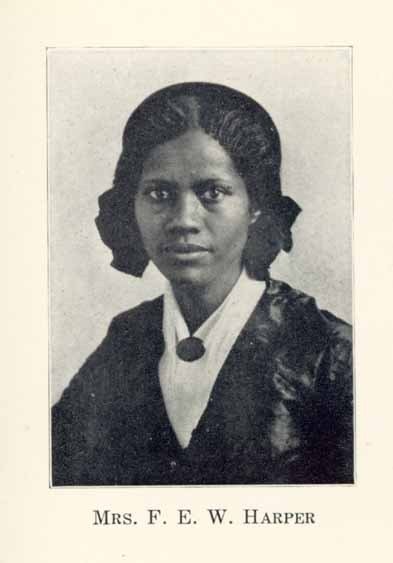
(BALTIMORE – August 8, 2025) – The Center for American Women and Politics (CAWP) recently dropped a timeline highlighting major milestones in U.S. women’s political history — from Seneca Falls to Kamala Harris. It’s long, detailed, and well-produced.
But let’s keep it real: it’s incomplete.
And this is personal for me — not because I’m a woman.
I’m a man. A Black man.
And as a journalist, publisher, and student of history, I have a responsibility to call it like I see it.
What I see is a whole lot of celebration for white women’s progress — and not nearly enough credit given to the Black women who’ve been leading, building, organizing, and risking it all from day one.
Where’s Sojourner Truth, who stood up in 1851 and demanded the world answer: “Ain’t I a Woman?”
Where’s Frances Ellen Watkins Harper, a Baltimore legend who confronted white women suffragists with truth and grace?
Where’s Ida B. Wells, who stared racism in the face and built her own organizations when others tried to silence her?
And how do you miss Frances Ellen Watkins Harper — a Baltimore-born powerhouse who was one of the first Black women to publish a book in the U.S. and who addressed the 1866 National Women’s Rights Convention with a message that still resonates? Raised and educated in Baltimore at her uncle’s Watkins Academy for Negro Youth, Harper’s early years in this city shaped the moral clarity and courage that defined her national work. She’s not a side note. She’s a cornerstone.
You mean to tell me there’s a 48-year gap between the 19th Amendment and the first meaningful mention of a Black woman in elected office? That’s not an oversight. That’s historical malpractice.
Black women have always been in the fight.
They didn’t wait to be invited. They didn’t ask for permission. They created their own lanes — from the Black women’s clubs of the 19th century to the organizing of the Civil Rights Movement to the halls of Congress today.
And while others were patting themselves on the back, Black women were doing the work.
I’m not speaking for them — I’m standing beside them.
And I’ll use every mic I’m handed to make sure their names, their labor, and their leadership are never erased. Because Black women didn’t just join the movement.
They moved the movement. And BlackUSA.News will always make sure the world knows it. 
📍 Watch LIVE on LinkedIn, YouTube, and Facebook
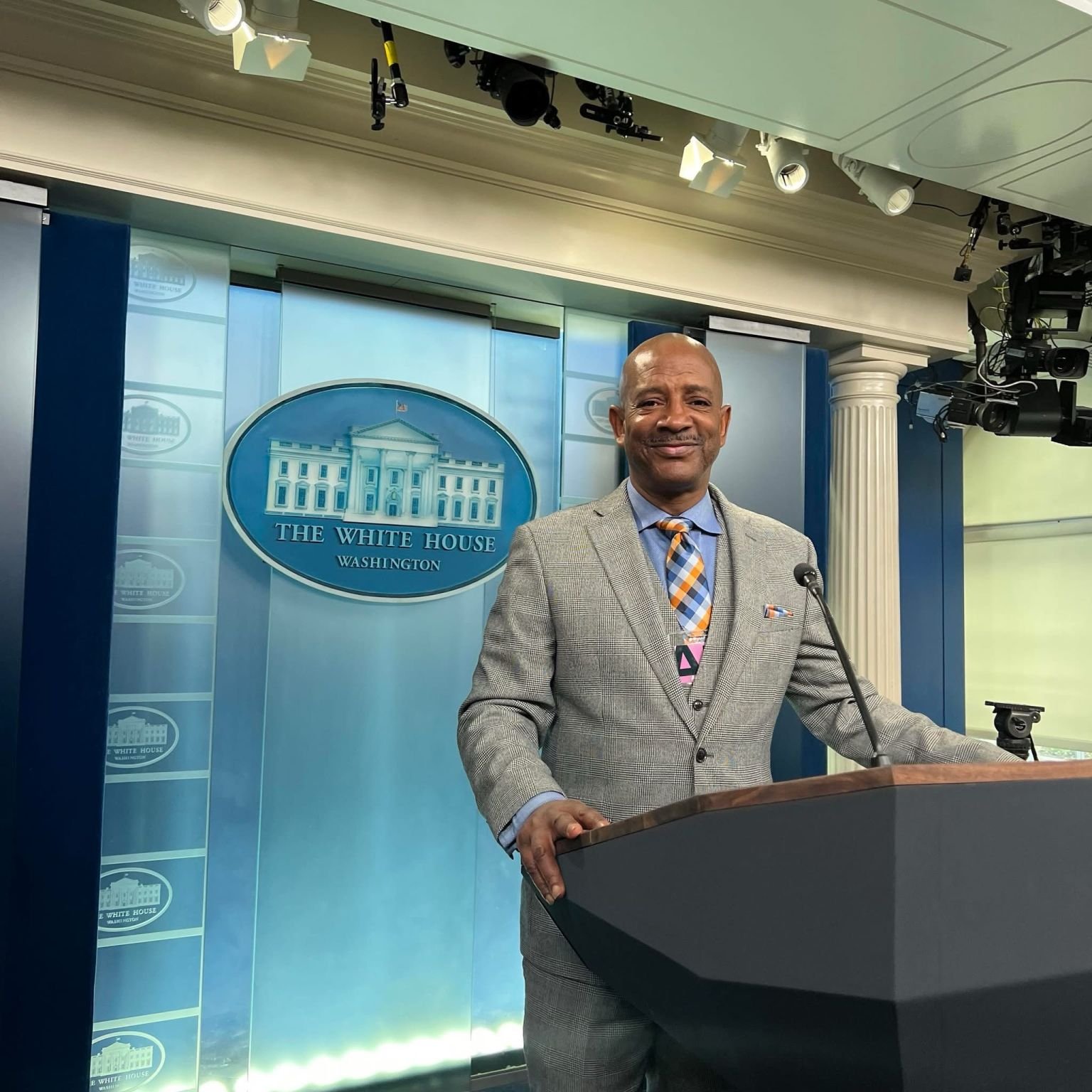
(BALTIMORE – August 2, 2025) – Greetings. 你好. Namaste. Hola. Bonjour. Salaam alaikum. Nomoshkar. Olá. Shalom. Здравствуйте.
I come to you humbly and respectfully to say this: most of the people I know and live among are nothing like President Donald Trump.
From where I stand, I imagine much of the world watches in disbelief as this man — and those aligned with him — continue to dismantle civil rights protections, gut healthcare programs like Medicaid, and insult global allies without remorse. It’s disheartening, shameful, and dangerous.
And yet, here we are.
Even after years of evidence — his public misogyny, the racism, the cruelty, the lies — millions still voted for him. Only now, with democracy in crisis and global trust fractured, are some Americans having what we call a “come-to-Jesus moment.”
That’s what we call cognitive dissonance: when someone knows the truth but refuses to fully accept its consequences.
Around the world, cultures may differ, but many share a basic value: respect. It costs nothing — but means everything.
I felt that truth in my bones when I watched Vice President J.D. Vance berate Ukrainian President Volodymyr Zelenskyy in front of the global press. I was sickened. The disrespect was not only unnecessary — it was classless.
I wasn’t raised like that. And neither were many of the good people I know across this country.
To be honest, I think the group most manipulated in all this were white women voters. They knew who Trump was. The video clips, the criminal allegations, the “grab ‘em” tape — it was all out there. But still, many chose him over Kamala Harris, a competent and qualified leader.
Was it the trauma of having had a Black president for eight years that made the idea of a Black woman too much to bear? Maybe. But it’s worth asking.
America has never truly reconciled with its original sin: slavery and the structural racism that followed. And now we have a president who canceled MLK Day, who mocked a teenage climate activist on the world stage, and whose wife often appears unwilling to even fake a smile beside him.
Let us not forget: this is the man who incited a violent insurrection on January 6th, 2021.
Dear world, please know this: America is better than what you’re seeing right now.
As my mother always said, “Nobody is better than you, and you are no better than anyone else.” That’s the kind of America I believe in — not one built on ego and profit, but on humility and shared dignity.
Still, we live in a society where your bank account defines your worth, where kindness is seasonal, and where too often, decency gets buried under division.
But where I come from — Baltimore — we still learn respect. At home, in the streets, in school. You give it, you get it. You don’t give it, you learn the hard way.
That’s the American spirit I stand for. That’s the America I want the world to know.
So no, we are not all like Trump. And many of us are doing everything we can to keep our country from falling deeper into that abyss.
Wishing you peace in the midst of this storm.
‘Til next time,
Doni Glover
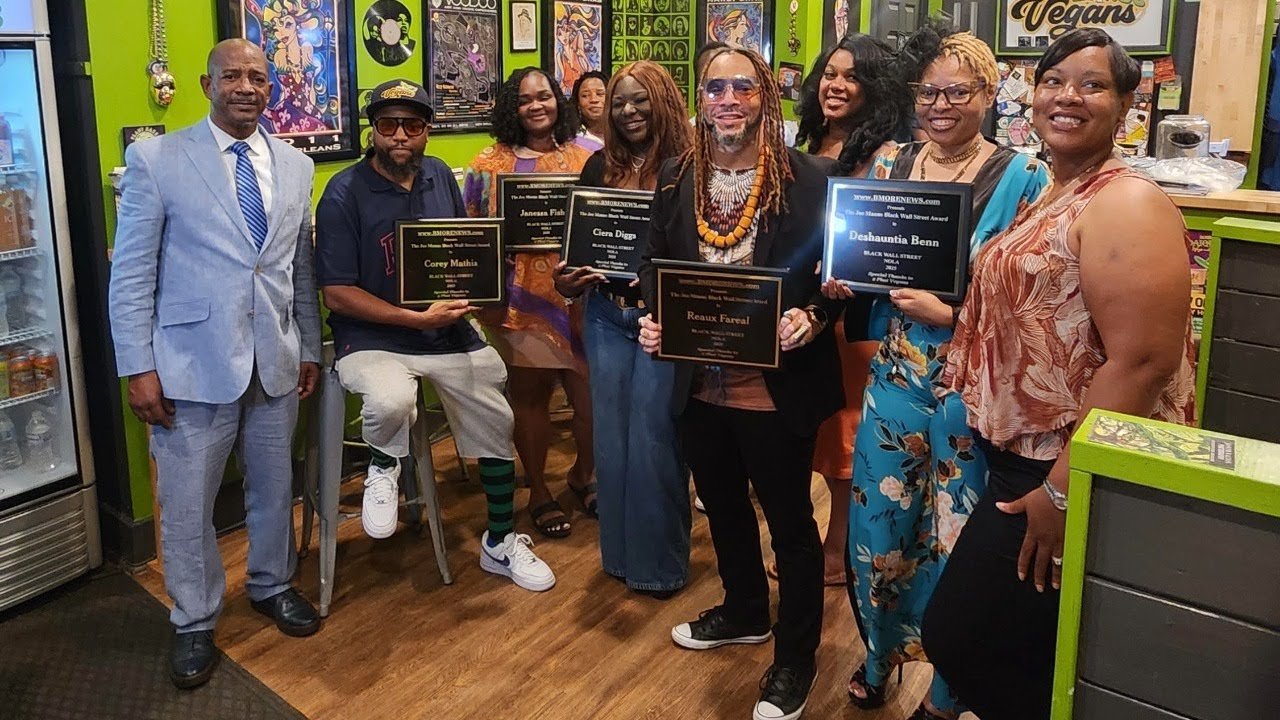
(BALTIMORE – August 2, 2025) – In December 2020, right in the thick of COVID, everything was turned upside down. Interviewing people became nearly impossible — folks weren’t coming outside, Fauci was in everyone’s ear, and Trump was out here talking about drinking bleach. It was chaos.
But through the madness, we found a way forward. We embraced streaming.
Special thanks to Peggy Morris of Sisters4Sisters Network. She introduced me to StreamYard.com, and the rest is history. That connection helped birth BlackUSA.News — the national arm of BMORENews.com. It wasn’t the first time Peggy and her network showed up for us, and it likely won’t be the last.
From there, the movement grew.
On the West Coast, De’Von Walker and Troy Rawlings have been pillars. Troy — a Baltimore native — brings heat from Los Angeles, while De’Von’s Black Wall Street Board Game reminds us of Monopoly with a mission: to uplift Black-owned businesses.
In Oakland, Doug Blacksher has been a home-run-hitting host. His show consistently breaks reach records, diving deep into politics and business — his two favorite lanes.
Up in New York, our go-to is Tasemere Gathers of The DM Firm. She’s solid, dependable, and visionary. And we’d be remiss not to shout out Walter Edwards, Regina Smith, and Vito Jones in Harlem, as well as Makonen of the Harlem Business Alliance — each of them pushing the needle forward.
In Atlanta, Robert Scott and Bou Kahn have not only supported the news but have helped us successfully host the Joe Manns Black Wall Street Awards over the years.
And then there’s Lee Vaughan, our National President. Thanks to Lee, we’ve expanded from 6 to 9 cities — adding Mobile, Las Vegas, and Tulsa to the fold. One of his honorees? None other than D.L. Hughley.
Let me not forget Dr. Eric Kelly, a brilliant connector introduced to us by the illustrious Marsha Jews, our resident anchor and a national treasure.
We stream live on LinkedIn, Facebook, and YouTube.
This is our rebirth.
This is BlackUSA.News.
Check us out — and spread the word.

Remember Who You Are: The Indigenous Series 📱

Remember Who You Are: The Indigenous Series

Indigenous Series: Reclaiming Our Legacy 📱

Indigenous Series: Reclaiming Our Legacy

Indigenous Series: Save Our Legacy

Remember Who You Are: The Indigenous Series

Remember Who You Are: The Indigenous Series 📱

Indigenous Series: Reclaiming Our Legacy

Indigenous Series: Reclaiming Our Legacy 📱

Indigenous Series: Save Our Legacy 📱
Newsletter
Subscribe to our newsletter to get the latest news directly to your inbox.
